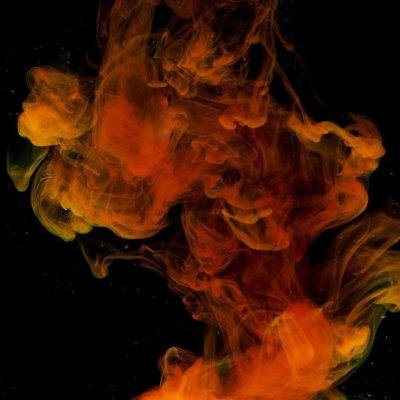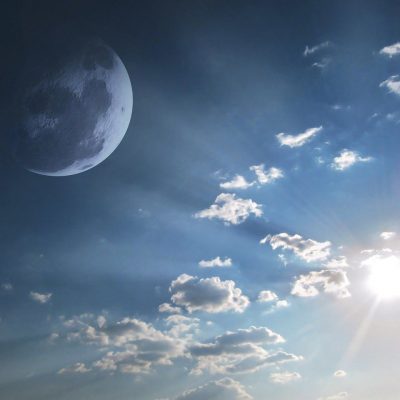Sparks of Vayeira
When Evil Self-Destructs

We begin the parsha with the three angels that visit Avraham after his brit milah. Three angels, as many of us learned as children, means three missions. One mission per angel. There’s just one problem: the angel Raphael, who came to heal Avraham and also to save Lot from Sodom. He appears to have two missions. In the intersection of these two missions, Rav Shapiro finds some amazing insights.
The angels that appear to Avraham at the beginning of Parshat Vayeira did not come at a random time, with three unrelated messages. They came after the brit milah because the brit, related to the word beriyah, creation, changed the nature of the world. The angels came to reveal three aspects of the new world. First, the brit created the reality of Avraham as the mainstay of the world. His relationship with Hashem would keep the world in existence. We, his children, are necessary in order maintain that relationship. The first angel revealed that this new reality meant that Yitzchak would finally be born.
The second angel came to heal. The brit was an opening of the spiritual channels that fully connect our bodies to the spiritual roots of life. This connection between physical and spiritual is the essence of healing. The second angel came, not just to heal Avraham, but also to reveal a new level of healing which was now available to the world.
And what about the angel that came to destroy Sodom? How is that connected to the brit? The answer lies in the specific connection between Avraham and Lot. It is a connection that Avraham describes as, “we are brothers (Bereisheit 13:8).” Rashi adds, their faces were similar. They looked alike. But they went in opposite directions. Whichever way Lot went, Avraham went the other way. Their alikeness was like a mirror reflection, exactly opposite.
In which direction did each of them go? The psukim tell us that Lot traveled away from Avraham, “mikedem,” literally east. Rashi tells us this means “mikadmo shel olam, away from the One Who preceded the world (Bereisheit 13:10-11).” Avraham had innovated a way to connect to Hashem, and therefore to connect to the basis of our true existence in this world. Avraham remained connected to Hashem at all times, but Lot wanted out. He wanted to live his life without Hashem.
The results of these choices created real, practical distinctions. Where once they traveled together, Avraham and Lot’s lives became opposites. Avraham embodied the middah of chesed completely. He planted an orchard and invited in guests. Lot went to Sodom, a society where kindness was forbidden by law.
The root of Avraham’s kindness came from his connection to Hashem, his recognition that our existence in this world is possible only because of Hashem’s boundless kindness at every moment. This connection to Hashem was expressed through every moment of his life. Lot, on the other hand, moved away from the One Who proceeds the world. He went to Sodom, where life was viewed as a fait accompli, with no thought to what came before. Sodom believed that the world runs on justice and was created for man to work. Man must earn his existence in the world, and it is not for others to give him. And while there is some truth to the idea that this world is a place of work, Sodom forgot one thing. Like the “self-made man” who started his business with an investment from his father, Sodom forgot that our entire ability to do anything in this world is only because of the tremendous kindness Hashem did for us when he gave us life.
The brit milah revealed Hashem as the Source of our existence, while Sodom’s entire existence was predicated on separation from Hashem as the Source of the World. In the face of the reality of the brit, the continued existence of Sodom became an impossibility. Their belief in their own self-reliance caused them to self-destruct. Sodom was inverted. The world experienced a new reality, a truth that is fundamental to the entire course of our world. Evil, when followed to its own conclusions, will ultimately reach such self-contradictory proportions it will self-destruct.
When Hashem originally created the world, He created a world of good and truth which stood opposite falsehood. There was no concept of “evil.” We introduced the concept of evil to the world when we ate from the Tree of Knowledge of Good and Evil. We are the reason that sin looks good in our eyes. For Moshiach to come, we need to remove the evil we added to our world. There are only two ways this can happen. The first is if the entire human realm unanimously agrees that evil should be dismissed. We all let go of it completely. This is what the Gemara calls a generation that is entirely righteous (Sanhedrin 98a). As this seems highly unlikely, it’s a good thing that there is another option, what the Gemara calls a generation that is entirely evil. In this generation, Rav Shapiro tells us, “the bad becomes stronger and stronger until it reaches such dimensions as to contradict itself, and its impossibility becomes glaringly evident (p. 480).” When evil advances to such a degree that it becomes unsustainable, transformation can take place. As we say in our tefillot for the Yamim Noraim, “wickedness shall dissipate like smoke.” Sodom was the first, but the rest of the evil in the world will someday follow.
But that is not the end of the story. There is one final step in the process which we learn from a man named Eliezer ben Durdaya (Avodah Zara 17a). This was a man who spent his entire life in pursuit of the basest pleasures, to the exclusion of anything meaningful. This continued until one day he recognized that he had lived himself into a state of non-existence. He was completely disconnected to anything real. The moment he recognized the truth was a moment of self-destruction. He perished from this world. But it is also the moment when he gained everlasting life. He was transformed to Rabbi Eliezer ben Durdaya.
His Jewish soul, like all Jewish souls, could never be destroyed. Actually, everything created through Hashem’s eternal world cannot be destroyed. This is what Rabbi Eliezer taught us. When we are at the point of self-destruction, we have the choice to destroy our old self through the process of transforming it into something better. This is the real truth of Sodom. From the ruins of Sodom was the seed of our final true existence.
Avraham brought the world closer to its true purpose, its healing, through direct connection with Hashem. He taught us truth through bracha. But Lot also brought the world closer to is true purpose, in an inverted way. Lot, the midrash tells us, had tents: the tent of Rut the Moabite, who was the great grandmother of David HaMelech, and the tent of Naamah the Ammonite, who was the mother of Rechavam, heir of Shlomo HaMelech. Lot taught us that evil self-destructs. That it is unsustainable. That when evil grows stronger, strong enough to self-destruct, it is also part of the healing that our world needs. This is why it was the same angel, Rafael, who brought healing to Avraham and who saved Lot from Sodom. From both Avraham and from Lot, the Moshiach is born.



